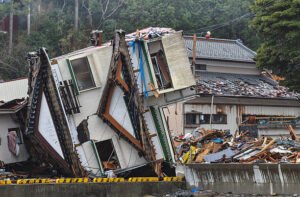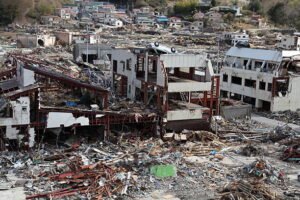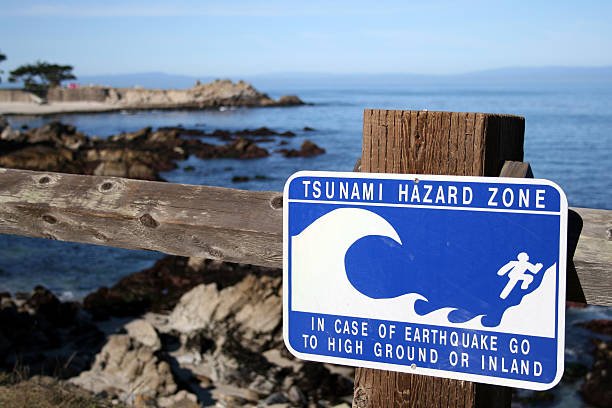Russia Earthquake Triggers Tsunami: On Sunday, July 20, 2025, a significant seismic event shook the eastern coast of Russia’s Kamchatka Peninsula. According to the U.S. Geological Survey (USGS), a 7.4 magnitude earthquake struck beneath the Pacific Ocean, approximately 144 km east of Petropavlovsk‑Kamchatsky, at a depth of around 20 km. This intense jolt followed two preceding tremors—magnitudes 6.7 and 5.0—creating a cluster of seismic activity that raised regional alarm.

Tsunami Alert Issued:
In the quake’s immediate aftermath, the Pacific Tsunami Warning Center (PTWC) and Russia’s Ministry of Emergency Situations issued tsunami warnings for coastal Kamchatka. They cautioned of potentially “hazardous tsunami waves” up to 1 meter high within a 300 km radius of the epicenter.
More specific estimates included possible wave heights of:
-
60 cm in the Commander Islands,
-
15–40 cm around Kamchatka,
-
under 30 cm in Japan and Hawaii
Even Hawaii’s National Tsunami Warning Center issued a precautionary watch, anticipating small waves, estimating a possible 60 cm wave approaching the Aleutian region. However, that watch was lifted within hours.
Timeline of Events:
-
07:07–06:49–~07:10 UTC: Sequences of earthquakes registered: 5.0, 6.7, then 7.4 magnitude sparks increasing concern.
-
Shortly after >07:00 UTC, Tsunami alerts were activated by both PTWC and Russia’s EMERCOM.
-
08:49 local time (~06:49 UTC): Main 7.4 quake confirmed.
-
Within 2 hours, Warnings were downgraded and fully lifted as no significant tsunami was recorded.
Impact and Aftermath:
Despite the earthquake’s intensity, no casualties or major damage have been reported so far. Remote monitoring confirmed the absence of dangerous waves in populated areas, prompting the official lifting of all tsunami advisories.
Locals reported feeling several aftershocks, over two dozen according to Russian state media and AP, though their strength has significantly decreased. Authorities continue to monitor the region, aware that Kamchatka sits on the highly active Pacific “Ring of Fire” fault zone.
Historical Context:
Kamchatka’s seismic history is dramatic. Well-known examples include:
-
The 1952 Severo‑Kurilsk quake (M ≈ 9.0) triggered waves up to 9.1 m in Hawaii. It caused no local fatalities but destroyed Severo-Kurilsk town, claiming 2,336 lives in the Kuril Islands.
-
The 1963 Kuril Islands quake (M8.5) and the 1958 Iturup quake (M8.3–8.4) also produced tsunamis but more limited local impact.
These patterns highlight Kamchatka’s vulnerability. Today’s 7.4 event is less powerful but still serious enough to trigger automated tsunami systems.

Lessons Learned:
This incident reinforces several key points about tsunami preparedness:
-
Speed and Precision Matter
The ability to issue and lift alerts promptly—within mere hours—shows modern monitoring has vastly improved response safety. -
Public Awareness is Essential
Residents heeded evacuation orders to higher ground, averting danger. Cautionary messaging (“stay offshore”) prevented widespread panic. -
International Coordination Saves Lives
Agencies from Russia, the U.S., Japan, Canada, and more shared data rapidly. This collective system ensures global regions can take precautionary measures even for distant seismic events (e.g. Hawaii). -
Invest in Education and Infrastructure
Coastal zones must teach tsunami response. History proves that early awareness can be lifesaving. Governments should reinforce “safe zone” signage and regular drills. -
Seismic Signals Are Not Guarantees
A large quake may not produce an actual tsunami—as seen here—but the protocols and public response must treat the risk as real until proven otherwise.
What’s Next?
-
Ongoing seismic monitoring in Kamchatka will track aftershocks.
-
Tide gauges and coastal cameras will remain active to detect any late-rising waves.
-
Emergency services may conduct inspections and readiness checks in communities like Petropavlovsk-Kamchatsky (~180,000 population)
-
Geologists will analyze the quake cluster to better understand rupture mechanisms and potential future threats.
Final Thoughts:
The July 20 Kamchatka earthquake exemplifies how a powerful undersea quake—7.4 magnitude—can prompt regional tsunami warnings, but result in minimal physical impact thanks to swift international response and public vigilance. While no harm was reported, this incident reiterates the importance of early warning systems, community preparedness, and intelligence sharing across borders.
For residents and authorities alike, it’s a testament: preparation works. Information must be timely, training continuous, and trust in systems unwavering. Given the Ring of Fire’s volatility, today’s scare is a reminder—not the last—for coastal communities to stand ready.
Let this vigilance continue—not as fear, but as empowerment.
ऐसे और भी लेखों के लिए हमारे साथ जुड़े रहें! Khabari bandhu पर पढ़ें देश-दुनिया की ताज़ा ख़बरें — बिज़नेस, एजुकेशन, मनोरंजन, धर्म, क्रिकेट, राशिफल और भी बहुत कुछ।
Massive Fire Destroys Tomorrowland 2025 Main Stage in Belgium Just Days Before Opening

